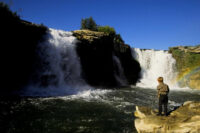Nursing classes stage reunion
By Lethbridge Herald on June 11, 2024.
 Herald Photo by Justin Seward
Students of St. Michael's School of Nursing's class of 1964 gathered to celebrate their 60-year anniversary during an alumni reunion on Saturday.
Herald Photo by Justin Seward
Students of St. Michael's School of Nursing's class of 1964 gathered to celebrate their 60-year anniversary during an alumni reunion on Saturday.Justin Seward
LETHBRIDGE HERALD
The St. Michael’s School of Nursing Alumni held a reunion for its nursing grad classes of 1959, 1964 and 1969 on Saturday at Sandman Signature Lethbridge Lodge.
The class of 1964 was celebrating its 60th year.
“You become a family because we lived together,” said Helen Paulence (Smith), class representative for the ’64 class.
“You just get to be sisters and family and everyone becomes very close to each other. You’re very supportive, very helpful for everyone. You really get to know people from their entire growing life and you enter there as an 18-year-old and three years later you come out as (an) RN (registered nurse).
Paulence said nurses’ training was different in her day from what it is today.
“So much more practical training, hands-on training and not near the textbook training that there is today,” said Paulence.
“We worked eight hours, 12 hours, you worked days, evenings, night shift. Nowadays it’s done at the same way as the university and the college hours are. So we worked very differently and there’s no question we were part of the workforce and even though we weren’t paid. You were certainly counted on to do your share of the work load.”
The general feeling for the classes back then was that nursing was a profession they wanted to get into.
“You didn’t go into nursing for the money or the pay cheque because it was not a very great pay cheque when you first graduated but it was very much a caring profession,” recalled Paulence.
“You wanted to look after people and help them with whatever you could help them with.”
Paulence saw the challenge with nursing school at the time with the training.
“Our psychiatric training was done in Ponoka and we spent time at the Children’s Hospital in Calgary (and that) is where we got a lot our pediatric training,” said Paulence.
“It was very involved and some if it was done away from Lethbridge because we couldn’t accommodate that here.”
Paulence does follow today’s nursing.
“Nursing today is taking more and more away from the bedside,” said Paulence.
“The registered nurse is no longer a nurse that’s at the bedside, she’s doing more of the supervising and the administrative duties, and our LPN and nursing assistants are doing more of the bedside care.
“And I think COVID even turned things more that way. I mean we have more and more nurses that are not happy with their career, I think that’s a well-known fact throughout the pull of Canada.”
Riet Scheffer took the X-Ray technician course in the 1960s.
“We were just all friends with each other,” said Scheffer.
“We’d be (in) the dining room together and if there’s any kind of lectures to be given we’d go and they would make us go to certain presentations and you were just always part of it.”
Scheffer thought the X-ray course was personalized then compared to now.
“It was all manual,” recalled Scheffer.
“(The students had to) go in the dark room, put your film in the developer, then wash it, put it in to fix and then wash it, then let it wash some more, then dry them and then clip the corners and hang them up for someone to see. And the whole procedure would, well to dry and everything, be an hour.”
25-24




